Related Research Articles
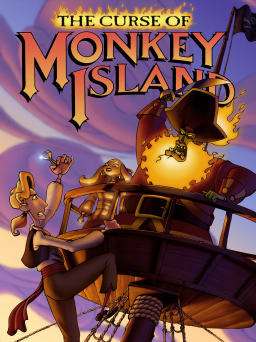
The Curse of Monkey Island is an adventure game developed and published by LucasArts in 1997. A sequel to 1991's Monkey Island 2: LeChuck's Revenge, it is the third game in the Monkey Island series.

Battleship is a strategy type guessing game for two players. It is played on ruled grids on which each player's fleet of warships are marked. The locations of the fleets are concealed from the other player. Players alternate turns calling "shots" at the other player's ships, and the objective of the game is to destroy the opposing player's fleet.

Pirates of the Caribbean is a dark ride at Disneyland, Walt Disney World's Magic Kingdom, Tokyo Disneyland, Disneyland Park at Disneyland Paris, and Shanghai Disneyland.

Sid Meier's Pirates! is a video game created by Sid Meier for the Commodore 64 and published by MicroProse in May 1987. It was the first game to include the name "Sid Meier" in its title as an effort by MicroProse to attract fans of Meier's earlier games, most of which were combat vehicle simulation video games. The game is a simulation of the life of a pirate, a privateer, or a pirate hunter in the 16th, 17th and 18th centuries. It was widely ported to other systems.

Claw is a 2D side-scroller platform video game published by Monolith Productions in 1997 about an anthropomorphic pirate cat who sets on a quest to find an ancient amulet while fighting enemies and solving puzzles. It is Monolith's second release after Blood, which was released that same year in May.

7th Sea is an out-of-print collectible card game (CCG) produced by Alderac Entertainment Group (AEG). It was released in August 1999. It is based on the 7th Sea tabletop role-playing game setting of Théah.

Pirate's Cove is a board game designed by Paul Randles and Daniel Stahl, originally published in Germany in 2002 by Amigo Spiele, illustrated by Markus Wagner and Swen Papenbrock. In 2003, Days of Wonder republished the game with a new graphic design from Julien Delval and Cyrille Daujean. In the game, players play pirate ship captains seeking treasure from islands and bragging rights from defeating other pirates in naval combat.

Cartagena is a German-style board game released in 2000, that takes as its theme the 1672 pirate-led jailbreak from the dreaded fortress of Cartagena.
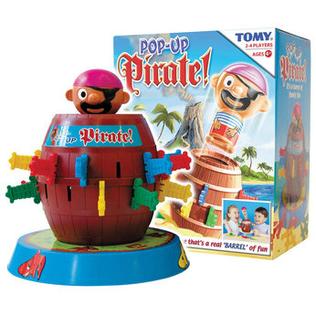
Pop-up Pirate is a popular luck-based game for children manufactured by Tomy. It originated in Japan in 1975 under the name One Shot Blackbeard Crisis and has seen many iterations over the years.

SpongeBob SquarePants: Revenge of the Flying Dutchman is a 2002 platform game based on the animated series SpongeBob SquarePants, developed by Vicarious Visions and BigSky Interactive, Inc. and published by THQ for the GameCube and PlayStation 2, and Game Boy Advance. It was the last game to be developed by BigSky Interactive, Inc. The game was released in North America in late 2002, while in Europe it was released in early 2003. The Game Boy Advance version was also released on a Twin Pack cartridge bundled with SpongeBob SquarePants: SuperSponge in 2005.

In English-speaking popular culture, the modern pirate stereotype owes its attributes mostly to the imagined tradition of the 18th-century Caribbean pirate sailing off the Spanish Main and to such celebrated 20th-century depictions as Captain Hook and his crew in the theatrical and film versions of J. M. Barrie's children's book Peter Pan, Robert Newton's portrayal of Long John Silver in the 1950 film adaptation of the Robert Louis Stevenson novel Treasure Island, and various adaptations of the Middle Eastern pirate, Sinbad the Sailor. In these and countless other books, films, and legends, pirates are portrayed as "swashbucklers" and "plunderers". They are shown on ships, often wearing eyepatches or peg legs, having a parrot perched on their shoulder, speaking in a West Country accent, and saying phrases like "Arr, matey" and "Avast, me hearty". Pirates have retained their image through pirate-themed tourist attractions, film, toys, books and plays.

Sid Meier's Pirates! is a 2004 strategy, action and adventure video game developed by Firaxis Games. A remake of Sid Meier's earlier 1987 game of the same name, it was originally published by Atari Interactive but in May 2005 2K acquired the rights to the title from Atari's parent company Infogrames and later went on to publish console and handheld ports of the game.
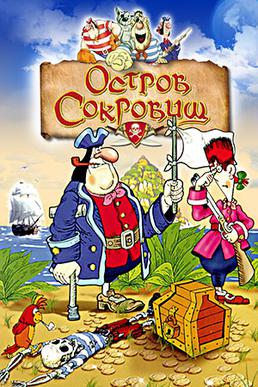
Treasure Island is a Soviet two-part live-action/animated adventure comedy television film adaptation of Robert Louis Stevenson's novel Treasure Island (1883). It was created by order of the USSR's state television company by the studio Kievnauchfilm. It is mostly traditional animation with some live action sequences, which are largely but not entirely separate.
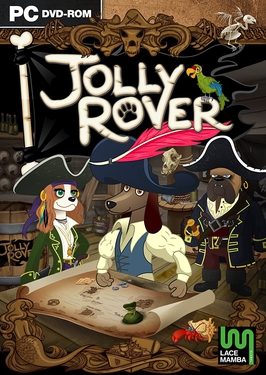
Jolly Rover is a 2D graphic adventure game developed by Australian studio Brawsome. The game was released in early 2010 for the PC, distributed digitally.
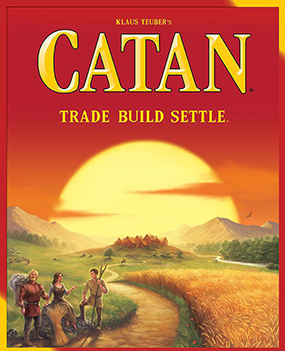
Catan, previously known as The Settlers of Catan or simply Settlers, is a multiplayer board game designed by Klaus Teuber. It was first published in 1995 in Germany by Franckh-Kosmos Verlag (Kosmos) as Die Siedler von Catan. Players take on the roles of settlers, each attempting to build and develop holdings while trading and acquiring resources. Players gain victory points as their settlements grow and the first to reach a set number of victory points, typically 10, wins. The game and its many expansions are also published by Catan Studio, Filosofia, GP, Inc., 999 Games, Κάισσα (Káissa), and Devir. Upon its release, The Settlers of Catan became one of the first Eurogames to achieve popularity outside Europe. As of 2020, more than 32 million copies in 40 languages had been sold.

Caribbean is a 2004 board game designed by Michail Antonow and Jens-Peter Schliemann. The game was nominated for the 2005 Vuoden Peli Adult Game of the Year.

Wizard's Quest is a fantasy board wargame published by Avalon Hill in 1979.

Armada is a board game published by Jeux Descartes in 1986. After Jeux Descartes published a second edition, Eurogames published a third edition in 2001 that changed the theme of the game from colonisation to treasure-seeking pirates.

Sea Hawks is a family board game about pirates and buried treasure published by Orca Games in 1981.

Pirates of the Barbary Coast is a maritime trading and strategy video game set in the days of the Barbary corsairs, published in 1986 for Atari 8-bit computers, Atari ST, and Commodore 64 by StarSoft Development Laboratories. In 1987, it was also published by Keypunch Software for IBM PC compatibles, while Cascade Games published versions for the other platforms in Europe.
References
- ↑ "Games and Puzzles 1973-11: Iss 19". A H C Publications. November 1973.